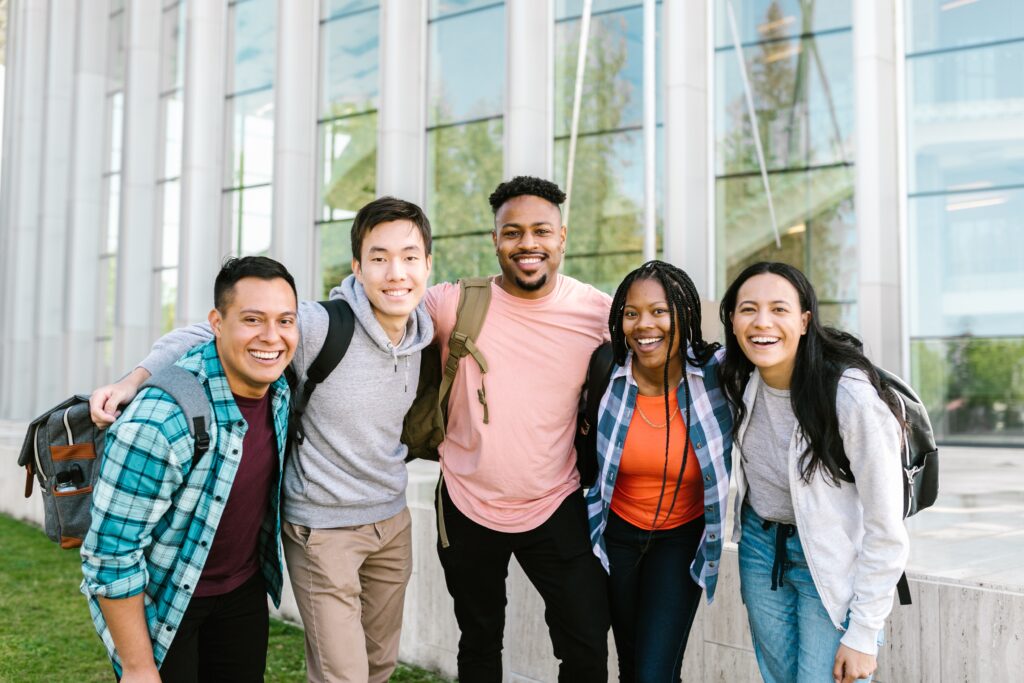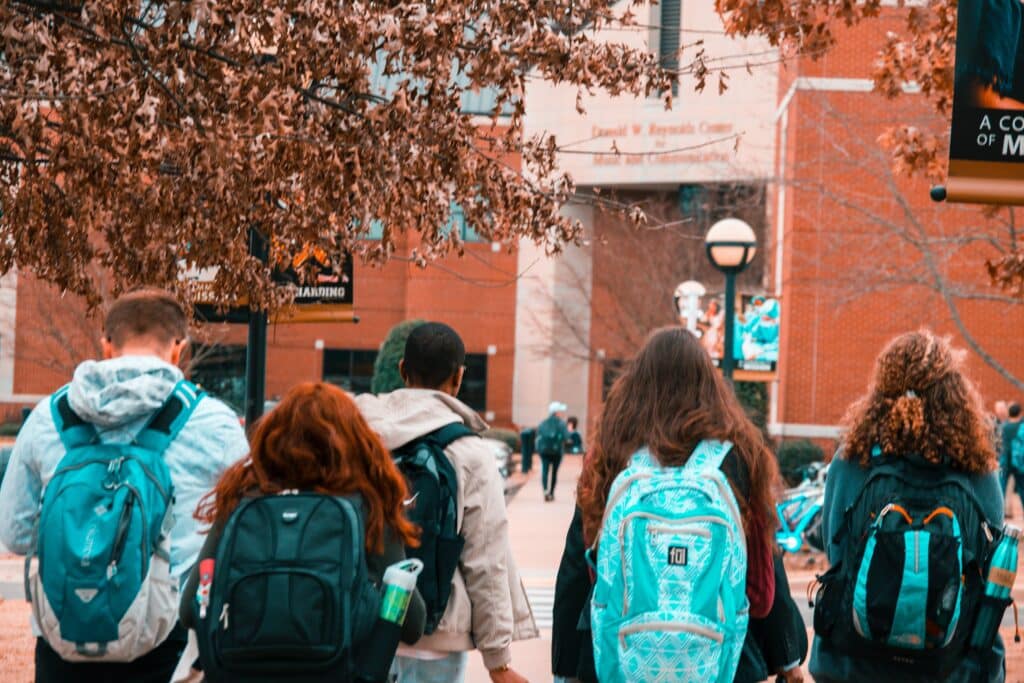Home to more than 4,500 degree-granting post-secondary institutions and over 20,000 private and public secondary schools, the U.S. offers many opportunities for international students who wish to study abroad. Most prospective international students require one of three types of student visas to study legally in the U.S., one of which is the M1 Visa.
Students seeking to study at a U.S. university or institution that results in a degree or diploma typically seek an M1 Visa. The U.S. Citizenship and Immigration Services (USCIS) oversees the processing and management of visa applications, including the M1 Visa. Learn more about the M1 Visa through this Remitly guide to help you determine if it’s the right one for you.
What is an M1 Visa?
The M1 Visa is a nonimmigrant visa and credential issued to foreign nationals who wish to pursue a course of study at a post-secondary school, a private elementary school, or a high school in the U.S. that grants degrees or certificates. A visa is necessary to apply for permission to enter the U.S. to begin your studies legally.
The M1 Visa is a document that you present at a port of entry to gain permission to enter the U.S. It allows visa holders to attend classes and earn a degree, certificate, or diploma from an approved institution.
An M1 Visa allows you to receive an education in the U.S. and return to your home country to apply the skills and knowledge you gained in employment.
What’s the difference between an M1 and J1 Visa?
The M1 student visa is for degree, certificate, and diploma-granting post-secondary programs as well as private elementary and high school programs. To obtain one, you must gain admittance to an eligible program.
A J1 Visa is for students participating in cultural exchange programs, which may include practical training. These may be sponsored by educational institutions, nonprofit organizations, and companies.
What’s the difference between an M1 and F1 student visa?
The F1 Visa is a student visa for foreign nationals who wish to participate in vocational studies in the U.S., while the M1 student visa is for degree, certificate, and diploma programs at universities or other certified schools.
Normally, you can’t convert an F1 Visa to an M1 Visa. You normally need to return home and begin the process again to study in the U.S. under an M1 Visa.
Who is eligible for an M1 Visa?
The following guidelines apply to M1 visa eligibility. Learn more about each requirement below:
Previous acceptance to an SEVP-approved school
The M1 Visa program requires admission to a school approved by the Student and Exchange Visitor Program. Each institution has its own application process, which may involve submitting test scores and transcriptions, writing essays, and taking part in interviews. You will also need to work with a designated school official (DSO) who will provide you with the necessary Form I-20. The DSO will also help you enter your information into the Student and Exchange Visitor Information System (SEVIS), which is used to track and monitor your status while studying in the U.S.
Proficiency in English
Proficiency in English is usually required for an M1 Visa. Often, foreign nationals demonstrate fluency by taking the Test of English as a Foreign Language (TOEFL). You can prepare for the test by participating in an online course or using English language learning apps.
The U.S. State Department makes an exception to this rule for students who are accepted to an English language learning program at an SEVP-approved institution.
Strong ties to your home country
Because the M1 Visa program is intended for students who study in the USA and return home, you typically need to prove that you have reasons to go back. This may include having family and dependents abroad, owning real estate, or having a lease for an apartment in your home country.
Ability to pay for education and financially support yourself
International students in the U.S. are expected to be financially independent. You can demonstrate evidence of this by showing you have a bank account with adequate savings. Showing you have the intention to open a U.S. bank account or student bank account may also be beneficial.
During your visa interview, you can also discuss how you intend to budget your money while in the U.S. as an international student.

What’s the minimum age requirement for an M1 Visa?
There’s no set minimum age requirement for an M1 Visa. However, SEVP-approved schools may have minimum age requirements for admission.
Can I transition from a B2 Visa to an M1 student Visa?
You may be able to change a B2 visitor status to an M1 student status by completing Form I-539 online.
However, if you start attending an academic program before your change of status is approved, the authorities will likely deny your request for a status change
What programs qualify for an M1 Visa?
If you’re attending a SEVP-approved institution, the following types of programs are eligible for qualification for an M1 Visa:
- University and college degree and certificate programs
- High school diploma programs
- Private elementary school programs
- Seminary programs
- Conservatory programs
- Language training programs
What institutions grant M1 Visas?
Institutions don’t give M1 Visas. When you wish to study in the U.S. under an M1 Visa, you’ll need to apply to an SEVP-approved school that then determines whether you meet the admissions criteria.
Acceptance at an SEVP-approved school doesn’t guarantee that you’ll receive an M1 Visa. The U.S. State Department determines who receives an M1 Visa.
The U.S. Department of Homeland Security offers a search tool for quickly finding SEVP-approved schools in the U.S.
Some schools give you the ability to study any program that they offer, while others only accept international students for specific programs.
How to apply for an M1 Visa
There are several steps to follow when applying for an M1 Visa. These include:
- Applying for and gaining admission to a program at a SEVP-approved school
- Gathering the necessary documentation for an M1 Visa application
- Completing the online visa application: Form DS-160
- Submitting a photo that meets Form DS-160 requirements
- Scheduling and attending an interview at the U.S. Embassy or Consulate
- Paying the non-refundable visa application fee
- You may also need to pay an issuance fee or a SEVIS fee if your M1 Visa application receives approval. Visa issue fees vary based on your nationality.
What school documents do you need for an M1 Visa?
To get an M1 Visa, first, submit Form I-20. Once you’re accepted to a SEVP-approved academic program, the school issues Form I-20 and sends it to you.
You may also need to show transcripts, diplomas, certificates, degrees, and standardized test scores to the U.S. Department of State
Other documents required for a U.S. visa application include:
- Valid passport
- Proof of ties to your home country, like a lease agreement, deed, or utility bills
- Proof of financial self-sufficiency like bank or investment statements
When should you apply for an M1 Visa?
The U.S. State Department issues an M1 Visa up to 120 days before the start of your academic program. It allows you to request permission to enter the U.S. with an M1 Visa up to 30 days before the program start date.
Time your application accordingly. Contact your local U.S. Embassy or Consulate for more information about when you should apply.
How long does it take to get an M1 Visa?
How long it takes to get an M1 Visa varies. There are often wait times for student visa interviews. The State Department website allows you to find out the wait time for an appointment with a consular officer at your local U.S. Consulate or Embassy.
If your school start date is fast approaching, you may be able to apply for an expedited interview appointment.
Once you’ve completed the interview, you can simply wait for your application to be processed. Providing all the necessary documentation upfront may help expedite your application.
What’s the duration of an M1 Visa?
The duration of an M1 Visa is one year or as long as you’re enrolled as a full-time student in the SEVP-approved academic program (whichever time frame is longer).

Can an M1 Visa holder work in the U.S.?
An M1 Visa holder can only work in the U.S. if the job relates to their program of study and they receive prior approval from their school.
For example, you can participate in a paid internship or a paid cooperative learning placement while on an M1 Visa. In some cases, an Employment Authorization Document (EAD) may be required for authorized employment.
How to stay in the U.S. after your M1 Visa expires
Once your academic program ends, you can remain in the U.S. for 30 days as you prepare to leave the country. If the academic program you attended lasts for less than a year, you can stay in the U.S. for the remainder of the year.
If you wish to remain in the U.S. for longer than your M1 Visa allows, you’ll need to apply for an Application to Extend/Change Nonimmigrant Status before the visa expires. You can complete the application, Form I-539, online.
U.S. Citizens and Immigration Services recommends that you fill out the application at least 45 days before the visa expiration date that appears on Form I-94, Arrival-Departure Record.
What happens when an M1 Visa expires?
When your M1 Visa expires, you become out of status if you remain in the U.S. and your visa is void. If you remain in the U.S. after your visa expires without proper approval, you may face deportation and be barred from ever returning.
Can I apply for an adjustment of status on my M1 Visa?
You can apply for an adjustment of status on an M1 Visa by completing Form I-539 online. If you’re applying for a status change to extend your stay in the U.S., you may receive approval if you meet all the following criteria:
- Your M1 Visa is still valid
- You haven’t committed any crimes that affect your visa eligibility
- You haven’t violated the terms of your admission to the U.S.
- Your passport is valid and will be valid throughout your stay
Can I change my M1 Visa to an H1B Visa?
The H1B Visa is a temporary work visa that allows educated foreign workers to obtain employment in the U.S. in their fields. You’re typically only able to qualify for a change from an M1 Visa to an H1B Visa if the education you received was in a completely different field from the one you wish to work in under an H1B Visa.
Can I change my M1 Visa to an F1 Visa?
Normally, you can’t change your M1 Visa to an F1 Visa unless you were mistakenly classified as a nonvocational student when you applied for your visa. Laws prohibit moving from an M1 Visa to an F1 Visa for any other reason apart from a classification error.
Can I get a green card with an M1 Visa?
No, you normally can’t get a green card with an M1 Visa. When you apply for an M1 Visa, you’re seeking to enter the U.S. for a single purpose—to study as a non-immigrant and then return home to use the knowledge and skills you gained.
A green card or immigrant visa has a different purpose. If you wish to apply for a green card, you’ll usually need to return to your home country and apply.
An immigration lawyer can help you understand the M1 visa requirements, guide you through the application process, and ensure you provide the necessary documentation for a successful visa application process.
Remitly is on a mission to make international money transfers faster, easier, more transparent, and more affordable. Since 2011, millions of people have used Remitly to send money with peace of mind.